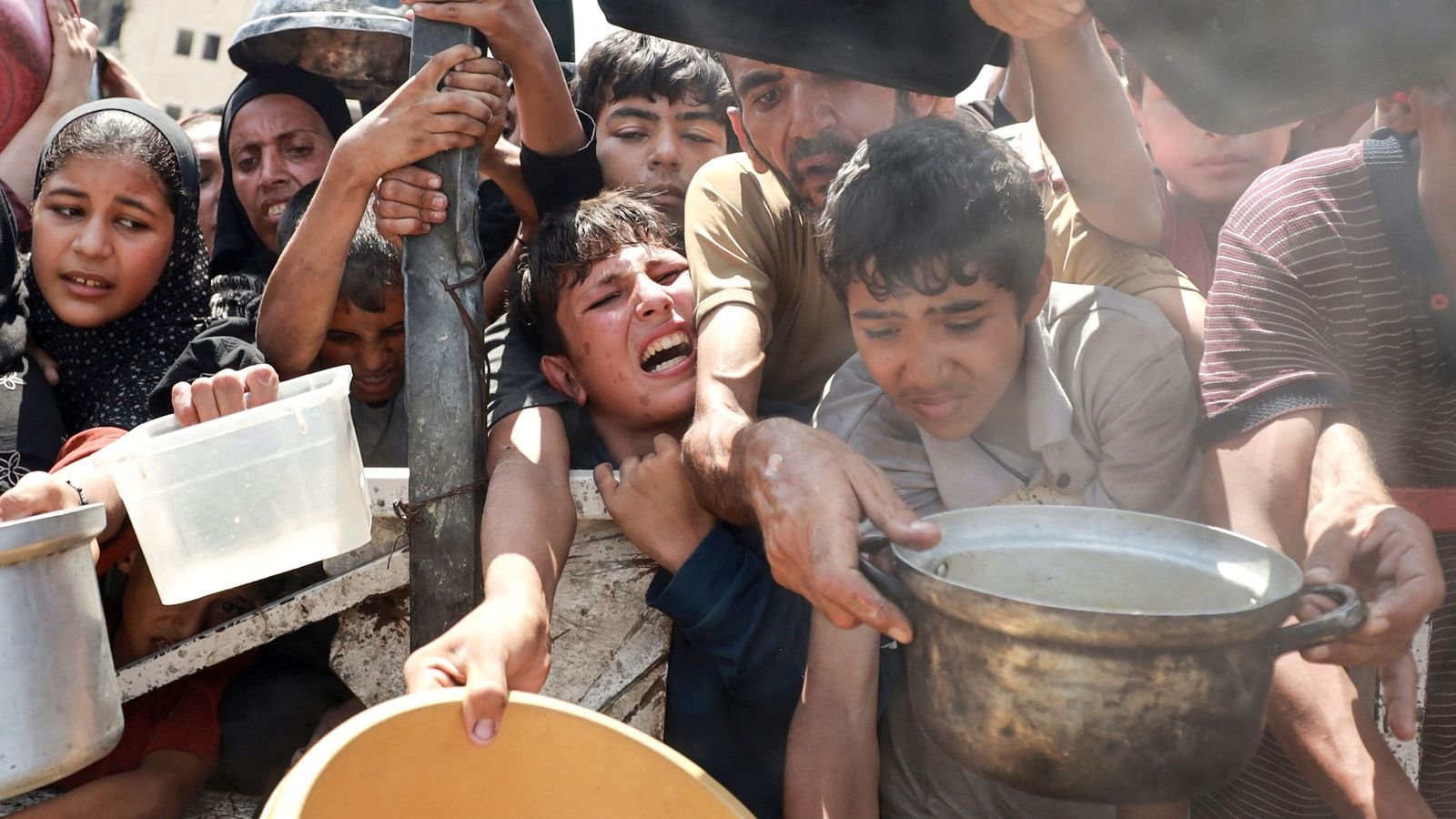A UN summit is underway in New York, with attendees trying to resurrect the idea of a two-state solution for Israel and Palestinians.
Foreign Secretary David Lammy is due to speak later at the event.
The two-state solution has long been hoped for as a way to bring about peace in the region.
It would see an independent Palestinian state established alongside the existing Israeli one.
This would give both people their own territory but has been rejected by Israel – see our 9.49 post for their latest on it.
Where to draw the border?
The biggest obstacle to a two-state solution is deciding what the borders of a potential Palestinian state would be.
Many believe they should be the same ones that existed before the 1967 Six-Day War, which saw Israel occupy East Jerusalem, the West Bank and Gaza.
Since then, increasing numbers of Israeli settlements have been established inside the West Bank, with around 600,000 Israelis now living there and in Occupied East Jerusalem.
Although these settlements are considered illegal under international law, their existence makes the territory increasingly difficult to designate as Palestinian.
The creation of Israel and the subsequent Arab-Israeli war of 1948 saw many Palestinians forced from their homes, in what is known as the Nakba, or “catastrophe” in English.
As such, the UN gave around 750,000 people refugee status, defined as people “whose normal place of residence was Palestine during the period 1 June 1946 to 15 May 1948, and who lost both home and means of livelihood as a result of the 1948 conflict”.
But under the same criteria, 5.9 million Palestinians – who live in the West Bank, Gaza, East Jerusalem, and in camps across Jordan, Lebanon and Syria – now qualify, and many would want to return to their once homes.
The question is where these people would go within the occupied territories, and if others would have to give way for them.
Jerusalem
There are particular border difficulties with Jerusalem.
Both sides claim the ancient city as their capital.
This is because of its huge historical and religious significance for both Israelis and Palestinians and the fact that it is home to several holy sites in Judaism, Islam, and Christianity.
The Israeli government claims Jerusalem is its “undivided capital”, and it is the seat of the Israeli government and parliament (Knesset), but East Jerusalem is widely considered an occupied Palestinian territory.
In theory, a two-state solution would officially recognise both East Jerusalem as the Palestinian capital and a western part of the city for the Israelis.
Who supports it – and what has Israel said?
Previously, Israel’s endorsement was conditional on Palestinian groups like Hamas demilitarising.
However, in recent years it has moved away from the idea and now openly rejects it.
Earlier today, Gideon Sa’ar, the foreign minister, claimed it would lead to the creation of a “Palestinian terror state”.
Fatah and the governing Palestinian Authority in the West Bank support the solution, provided they are allowed to police themselves.
Hamas, which controls Gaza, has committed itself to the destruction of Israel.
However, in a revised charter published in 2017, it said it would accept a Palestinian state along the 1967 borders.
The lack of consensus on the Palestinian side makes the solution difficult – and the admission of Israeli officials that they are no longer committed to it is near impossible.
Hope for the two-state solution peaked in the early 1990s, when the US facilitated the signing of the Oslo Accords under the presidency of Bill Clinton.
Famously, then Israeli prime minister Yitzhak Rabin and Palestinian Liberation Organisation chairman Yasser Arafat shook hands on the lawn of the White House.
